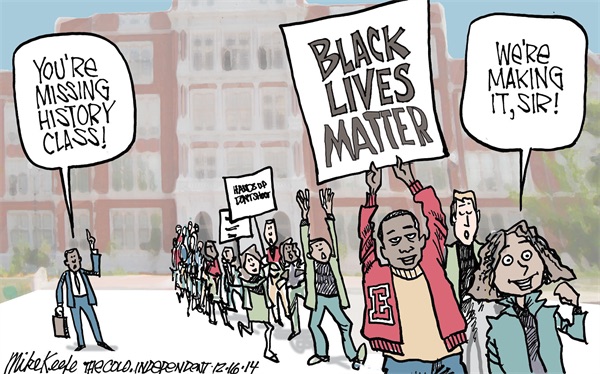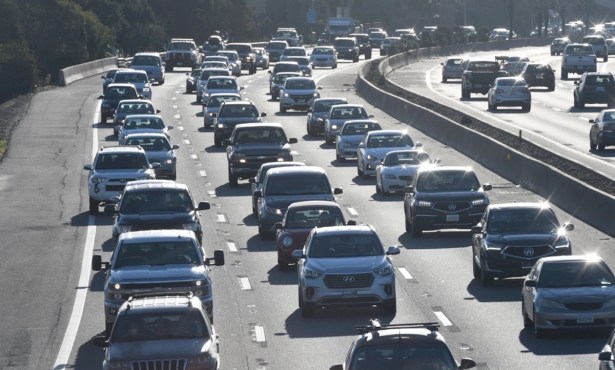Black Demands Are a Floor, Not a Ceiling
Four Years of Lip Service and No Funds for Equity Programs

Santa Barbara is a generous and responsive community. One need only look to the outpouring of response to the Thomas Fire and debris flow and the response to COVID-19 to see that when an emergency rises up, people across Santa Barbara County — indeed the whole Central Coast — rise up to meet it. From individuals to nonprofit organizations to funders and donors, it is inspiring and a source of great hope to see how quickly people and resources can be mobilized to respond. Now is the time to direct the same level of intention to advancing racial justice.
The killing of George Floyd at the hands of police on the heels of the killings of Breonna Taylor, Ahmaud Arbery, and so many other members of the Black community seem to be galvanizing moments for our nation, including communities across the Central Coast. In the wake of this tragedy, we have seen marches and rallies, and we have seen elected officials and nonprofit leaders release statements to the public. We have seen systemic and institutional racism named as deep-rooted problems engrained in the very fabric of our nation’s and communities’ institutions. These problems did not come upon us suddenly the way a natural disaster or pandemic does. They have been with us since the beginning of our Republic. It is long past time to mobilize the same level of resources to solve these problems that our community so readily dedicates to addressing other emergencies.
In Santa Barbara, through the hard work of Healing Justice: BLM (Black Lives Matter) SB and Black youth, a roadmap has been created from two sets of demands (which can be found here: Healing Justice: BLM SB) and here: Youth SB). Taken together, these actions are vital steps in addressing systemic racism locally, and our communities should act on them immediately. But it is critical that we see these steps as a start, not an end; as a floor not a ceiling.
As we engage in the work of implementing the agenda set forth by local Black leaders, we must dedicate the same level of human, social, political, and financial resources and creativity we have invested in responding to emergent disasters to engaging every sector of our region in long-term, intentional efforts to understand, condemn, and actively work to dismantle racism in all of its forms.
Racism is not the sole cause of all of the other challenges or community faces, but it is a contributing factor to so many.
• We cannot ensure a world-class education for all students without addressing racism in our educational system.
• We cannot create positive health outcomes for all without addressing racial and ethnic disparities in health and the impact of racism on the physical health of people of color.
• We cannot solve homelessness and housing challenges unless we address racial and ethnic disparities in home-ownership and the economy.
• We cannot foster strong mental health unless we recognize racism as a form of historic and current social trauma.
• We cannot solve environmental problems unless we address environmental racism and the disparate impacts environmental problems have on communities of color compared to white communities.
• We cannot foster safe and vibrant communities unless we address racism in our criminal justice and legal systems.
• We cannot produce an informed public unless we address racism in the media and journalism.
The list goes on. Fortunately, the resources to tackle the list run just as deep.
Two years ago, the counties of Santa Barbara and Ventura sent cohorts through a program called the Government Alliance on Race & Equity (GARE) co-facilitated by one of our nation’s leaders on racial justice (Race Forward) and Just Communities as a local partner. GARE is a national network of government working to achieve racial equity and advance opportunities for all (https://www.racialequityalliance.org/). Santa Barbara’s participation in GARE in 2017/18 laid the foundation for a more effective response to the Thomas Fire and mudslides through improved language justice in the county. And, yet, when the 2019 GARE program was set to launch, funds were not available for the county to participate. Now is the time for every city and county in our region to join GARE and invest in the process of creating Racial Equity Plans for their jurisdiction and our region as a whole.
Four years ago, a diverse group of nonprofit organizations and foundations came together to design a comprehensive initiative to transform the sector around issues of diversity, inclusion and equity. The goals were to address equity issues within and across nonprofits and foundations while also working to ensure the staff and board leadership of our sector better aligned with the people we serve. The design was met with a great deal of enthusiasm, but four years later remains largely unfunded with only a few small pilot projects under its belt. Now is the time to make racial justice training and systems change coaching available to every nonprofit and foundation in our community.
In our schools and districts, several school districts have begun the work of dismantling racism as a path toward addressing long-standing inequities in educational opportunity and outcomes. And, yet, as the work has begun to show results, it has also produced a backlash which rose to the level of a group of community members filing a lawsuit claiming that naming and addressing institutional racism is “anti-White, anti-men, anti-Christian, and anti-American.” Now is the time to not only reinvest in continuing and expanding racial equity work where it has already begun, but to spread it to every school district in the Central Coast.
Government, education, the nonprofit/foundation sectors — the work has already begun here. It must be expanded in these sectors and broadened to media, business, faith-based organizations, and beyond.
Santa Barbara County and the Central Coast as a whole have the resources to invest in the kind of sustained and comprehensive initiatives we need to uproot racism in all of its forms. We also have a diverse set of people and organizations capable of leading and contributing to this work. The question is, do we have the will? We urge funders and donors; elected officials; leaders in education, business, media, institutions of faith, and the community at large to seize this moment. To demonstrate that we as a community understand that we can start with statements and proclamations, but words alone will not solve these problems unless we combine them with individual and institutional action to create behavioral, policy, structural and cultural change in every part of our region.
Melissa Patrino is associate director and Jarrod Schwartz is executive director of Just Communities.



